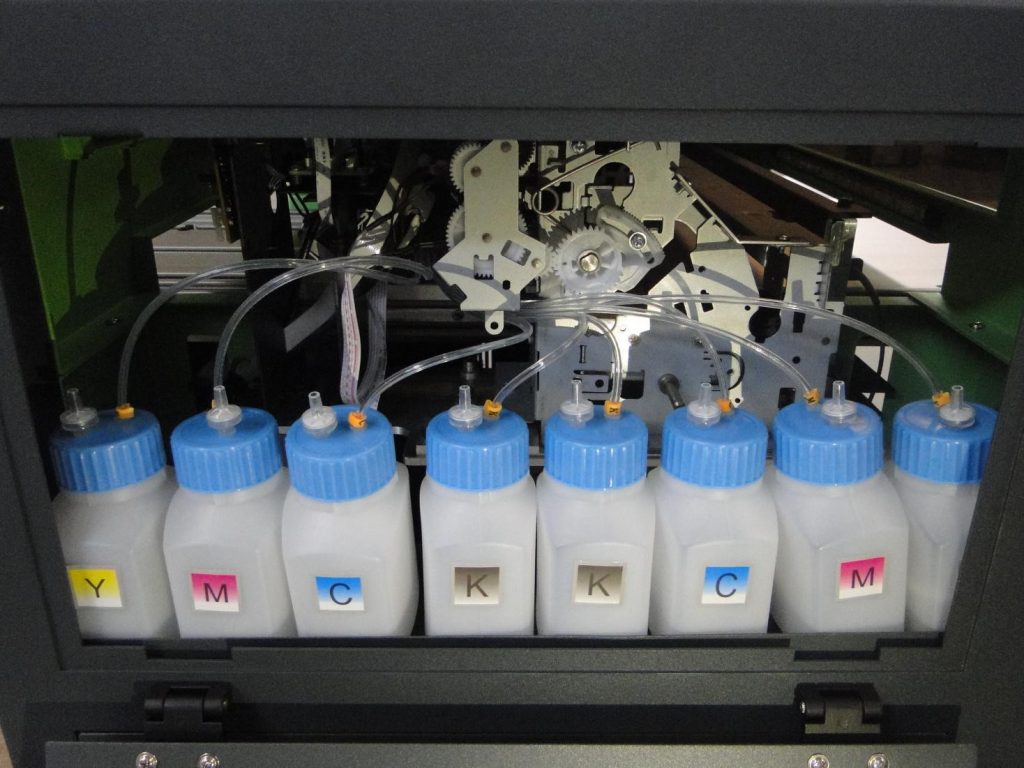The main feature of direct to garment printers is that they are less complicated than what you normally expect. Many people are surprised with the complicated images that render so accurately on something as soft as a T-shirt or fleece hoodie.
Direct to a garment can be best likened to at-home inkjet printers, except textile substrates replace paper. Like an at-home printer, direct to garment printer need no set up for different jobs, and still, render millions of colors.
Early generations of direct to garment printers were just modified standard inkjet printers. Indeed, the first models were from companies like Brother and Epson. Manufacturers simply modified their product to accommodate bulkier garments. They used inkjet textile inks slightly different from what you would get from an office supply store.
Newer models of direct to garment printers, such as the WER-CHINA Garment Printers are engineered for textile printing. Formulated to print directly to textile and other material substrates, they can produce complex photo-realistic designs!
Because of the challenges of printing on textiles, direct to garment printer inks can be expensive. For darker garments, an under the base of white ink is needed below the colors of the design. This base layer ensures that colors look the way you intended.
Before making a judgment about direct to garment printers based on ink costs, remember that the design of WER brand printers—especially the A3 and A1 size DTG printers—use as little ink as possible. In fact, the WER DTG printer advanced wash fast-pigmented genuine DTG Inks, as well as color enhancing RIP Software, which allows you to lay down the perfect amount of ink exactly where you need it. This technology will have your shop creating T-shirt designs at half the cost of inkjet-cartridge-based garment printers.

Translating colors from the digital image into DTG Ink for direct to garment printers onto a substrate depends on the CMYK color reproduction. CMYK is cyan, magenta, yellow and the dominant color black. This type is known as four-color processing since it uses combinations of the four basic ink colors, usually applied in the order they are named in the acronym. This process can simulate all the colors in the digital design.
DTG Inks bind to the fiber of the garment. This is why a fibrous material, such as 100 percent cotton, is better than polyester on direct to garment printers, which is extremely smooth. Applying DTG Poly Pretreatment can prepare polyesters and poly-blends for the direct to garment printer process.
After adding all the colors and finishing the design, a heat press cures the ink. The entire drying process can take only a minute to complete.
For more information on how direct to garment printers, visit www.wer-china.com or call 0086 13795270823.
Tags :
Knowledge & Stories| M | T | W | T | F | S | S |
|---|---|---|---|---|---|---|
| 1 | 2 | 3 | 4 | 5 | 6 | |
| 7 | 8 | 9 | 10 | 11 | 12 | 13 |
| 14 | 15 | 16 | 17 | 18 | 19 | 20 |
| 21 | 22 | 23 | 24 | 25 | 26 | 27 |
| 28 | 29 | 30 | ||||
Recent Posts
- Ultimate Guide to UV Printing: Insider Tips and Tricks
- Before You Invest: Choosing a Large Format Flatbed Printer
- Maximizing Brilliance: Mastering UV Printer Settings for Optimal Media Reflectivity
- The advantages of using a WER UV printer for large format printing (2)
- Achieve Stunning Results in Home Décor and Architectural Design with UV Printer
Archives
- January 2025
- November 2024
- September 2024
- March 2024
- December 2023
- November 2023
- October 2023
- May 2023
- March 2023
- February 2023
- January 2023
- December 2022
- November 2022
- October 2022
- September 2022
- February 2022
- January 2022
- December 2021
- November 2021
- October 2021
- September 2021
- August 2021
- July 2021
- June 2021
- May 2021
- April 2021
- March 2021
- February 2021
- January 2021
- December 2020
- November 2020
- October 2020
- September 2020
- August 2020
- July 2020
- June 2020
- May 2020
- April 2020
- March 2020
- February 2020
- January 2020
- December 2019
- November 2019
- October 2019
- September 2019
- August 2019
- July 2019
- June 2019
- May 2019
- April 2019
- March 2019
- February 2019
- January 2019
- December 2018
- November 2018
- October 2018
- September 2018
- August 2018
- July 2018
- June 2018
- May 2018
- April 2018
- March 2018
- February 2018
- January 2018
- December 2017
- July 2016
- June 2016
Recent Posts
- Ultimate Guide to UV Printing: Insider Tips and Tricks
- Before You Invest: Choosing a Large Format Flatbed Printer
- Maximizing Brilliance: Mastering UV Printer Settings for Optimal Media Reflectivity
- The advantages of using a WER UV printer for large format printing (2)
- Achieve Stunning Results in Home Décor and Architectural Design with UV Printer

